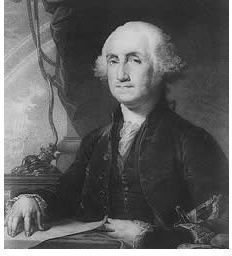When Was the First Presidential Election? Why Did It Happen?
The Constitution and the First Election
The first presidential election in the United States was closely tied to the timing of the ratification of the United States Constitution. When New Hampshire became the ninth state to ratify the Constitution in 1788, the Constitution officially became the law of the land.
Before this time, the country followed the Articles of Confederation, which did not require a president. The U.S. had a unicameral legislature, meaning no separation of powers and no need for a president.
One of the most important things that the Constitution did was create three branches of government: the legislative branch, the judicial branch and the executive branch. The executive branch is led by a president. So, the U.S. held its first presidential election on January 7, 1789 because the Constitution states that the country must have a president.
Different From Elections Today
The presidential election in 1789 was quite different than today’s presidential elections. No women, African Americans or Native Americans were allowed to vote. Only white men who owned property were considered legal voters.
Also, all states did not participate in the election. Rhode Island and North Carolina had not ratified the Constitution yet and New York’s legislature could not decide on its electors, so only 10 of the 13 original states voted.
There was also very little question about who would become president. George Washington, a member of the Federalist Party, had no opposition. The general from Virginia was enormously popular and did not campaign for the presidency because there was no need for him to do so. In fact, after defeating the British in the Revolutionary War, Washington looked forward to retirement. However, Washington was willing to serve as president if it was in the best interest of the country and he was easily elected to office.
This left who would be vice-president as the only unanswered question. In the first election, the office of vice-president went to the man who finished second in the balloting, John Adams. This rule changed with the 12th Amendment to the Constitution in 1804.
Similarities to Today’s Elections
The Constitution created the Electoral College, which is still used in presidential elections today. The president and vice-president are the only offices chosen with this system, which permits citizens to vote for electors, who then cast ballots for president.
Except for the votes from Maine and Nebraska, it is a “winner take all” system, in which the president and vice-president get all of a state’s electoral votes. This system does permit candidates to be voted into office without winning all of the popular votes, which did happen in 1876, 1888 and 2000. Rutherford Hayes, Benjamin Harrison and George W. Bush all lost the popular vote, but became president because they had more electoral votes. However, the Electoral College helps prevent states with large populations from controlling the elections with their state’s specific issues and concerns.
The First U.S. President
When George Washington was sworn into office on April 30, 1789 in New York, he was the first in a long line of leaders of the United States of America that have been elected by the citizens of the country. Consider the things that are different from today and how much the country has changed, but also think about how things are the same. While the system has been seriously flawed at times, such as by limiting those who could vote due to gender or race, it has always been a system rooted in democracy. The right to govern in the U.S. comes from the people, which the country witnessed in its first election and every election since then.
References
1. History: First U.S. Presidential Election: https://www.history.com/this-day-in-history/first-us-presidential-election
2. Politico: First U.S. Presidential Election on Jan. 7, 1789: https://www.politico.com/news/stories/0108/7692.html
3. U.S. Department of State: America: Ratifying the Constitution: https://www.america.gov/st/usg-english/2008/April/20080416001234eaifas0.5001337.html
Image Credit: Library of Congress
